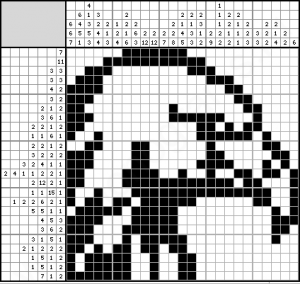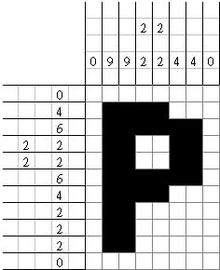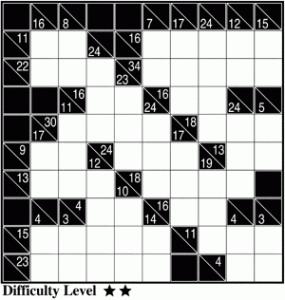Over the past month we’ve looked at five different Japanese logic puzzles and their histories. The amazing international success of some of these puzzles, such as sudoku, kakuro, and nonograms, can only be attributed to extraordinary process of refinement the Japanese puzzle company Nikoli puts its puzzles through. All of these puzzles have undergone extensive peer reviewing by millions of people, with rules being added or changed, until the puzzle is perfect. Sudoku is not a success by chance; it is a success because it has been slowly formed over generations, over continents, and finally finished by Nikoli in the 1980’s.
Oddly enough, I was never as much of a fan of sudoku. I was first addicted to kakuro, or cross sums as they’re sometimes called, in elementary school. From there I moved on to nonograms, and then to hashi. I appreciate the commercial success of sudoku, and it is still fun at times, but I enjoy these other puzzles a lot more. It’s amazing that puzzles such as kakuro and sudoku can be so similar, yet require a completely different way of thinking to solve them. I would urge you, if you are also not a fan of sudoku, to try one of the other puzzles discussed in this blog, because it may suit your way of thinking better than sudoku.
The beauty of the logic puzzles coming out of Japan today is that their rules are so simple and easy to remember, yet the puzzles themselves can range from being incredibly easy to devilishly challenging. They all employ numbers, but all are single-digit numbers and the only mathematical skill required for most of them is counting (although kakuro requires adding). I provided helpful tips throughout this blog for solving these puzzles, but the simplicity of the rules mean that anyone can figure out these tricks pretty quickly. These aren’t crosswords, where you need a bank of words or cultural trivia to draw from to solve the puzzle; these rely solely on a person’s ability to think logically through all the possibilities and narrow them down to one solution. Thus people of all ages, of all different backgrounds can enjoy these puzzles.
Hopefully this blog has introduced you to at least one new puzzle and inspired you to try it for yourself. All the puzzles discussed in this blog can be easily played either online or through an app for free, if you don’t mind the ads. If you prefer paper and pencil, there are many books and magazines out there. So the next time you feel stressed about school, work, family, friends, whatever – just take a moment, drink a cup of coffee, and enjoy a simple logic puzzle. For the last time: happy puzzling, dear reader!
__________________________________________________________
One last Bryce joke:
My roommate’s best friend Bryce is always buying logic puzzle books for his friends. People are always asking him, “Bryce, why do you keep giving me logic puzzle books?” and he replies, “Well, someone in this country has to be able to think logically and I’m too busy clowning around.”












